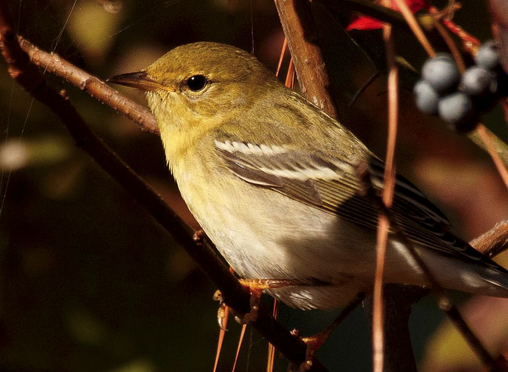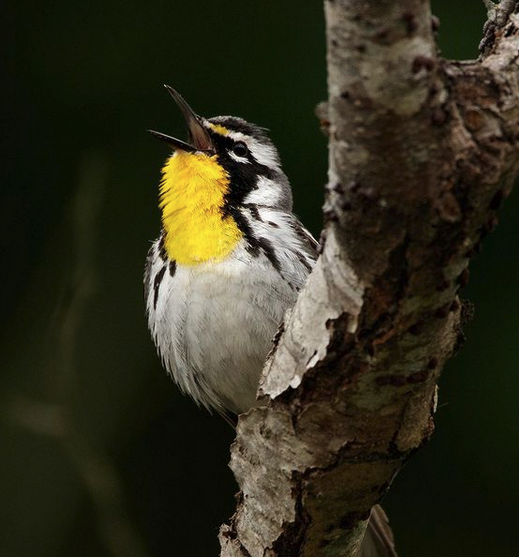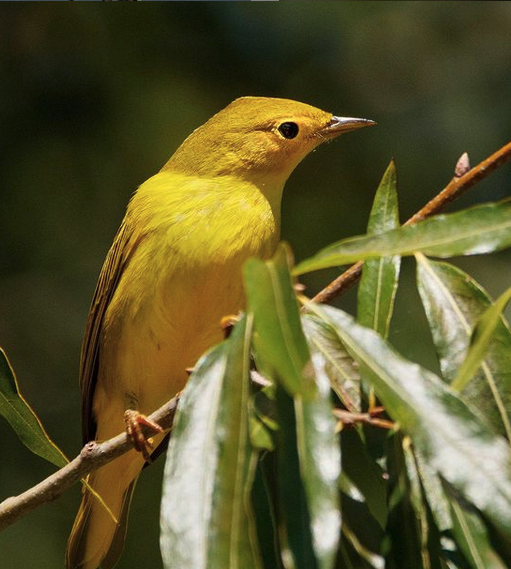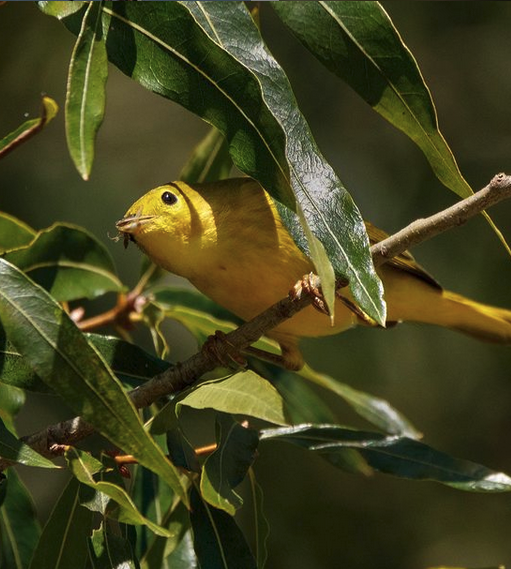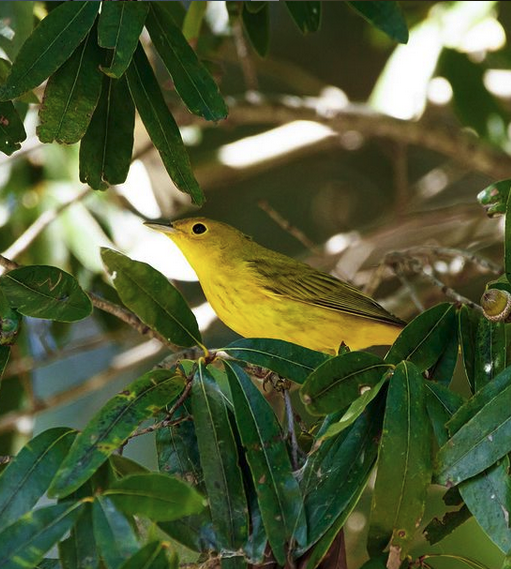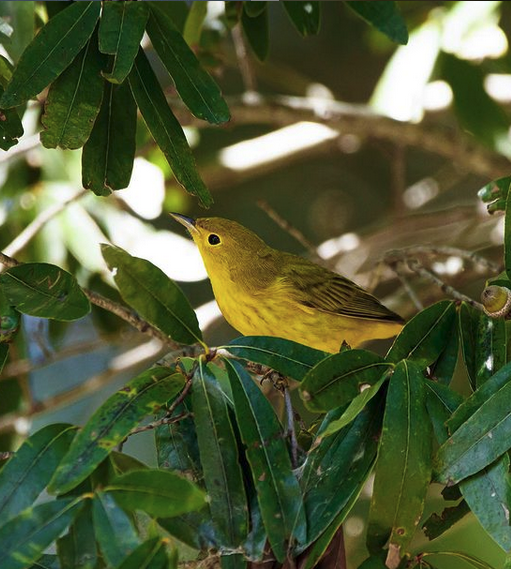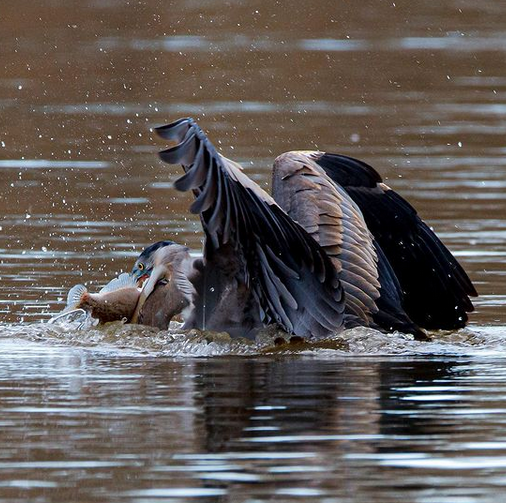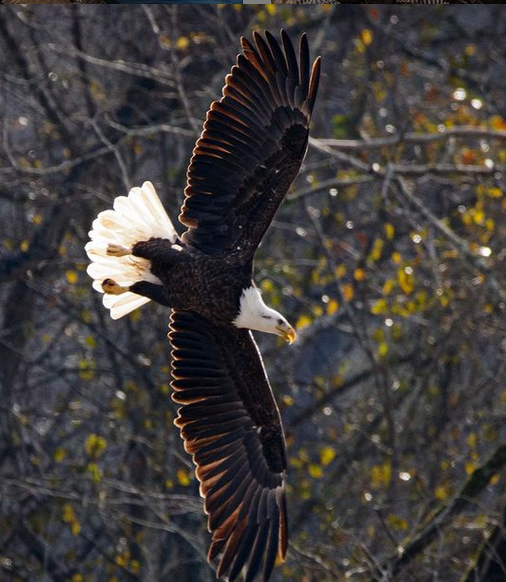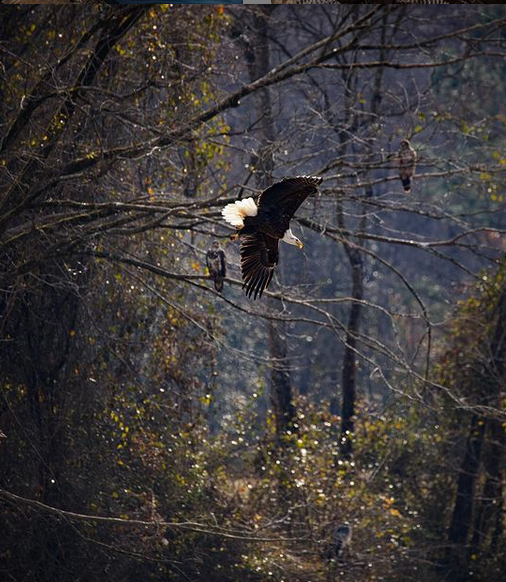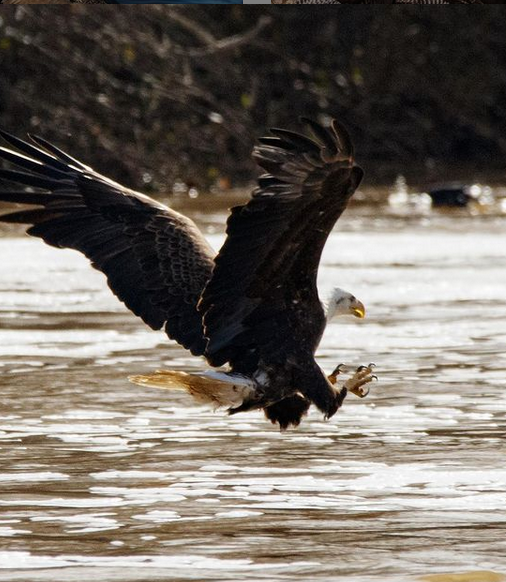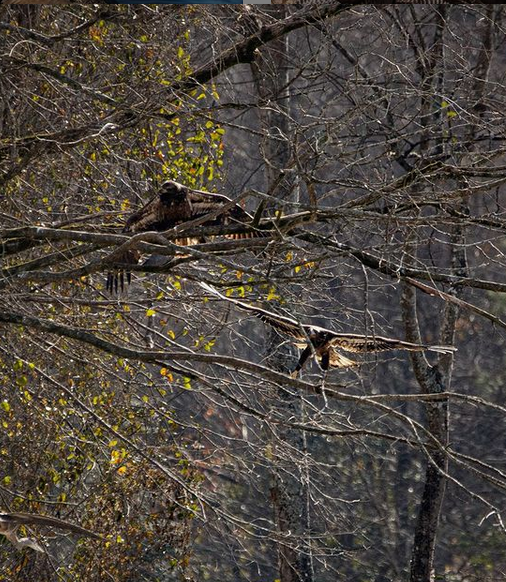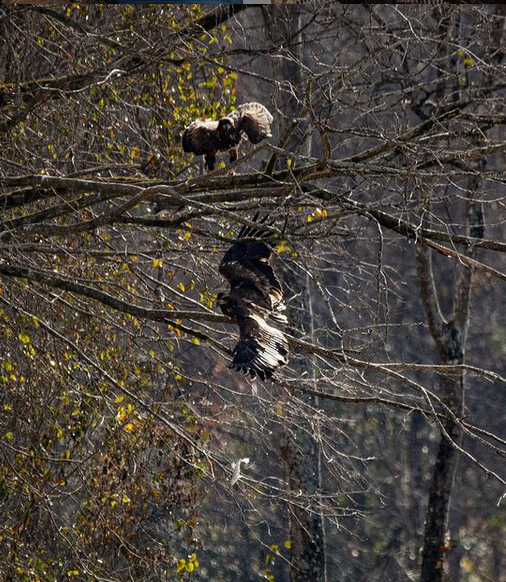By Sally Siko
As autumn migration is winding down it’s getting a little more difficult to tick off the remaining warblers that I’ve set out to see for my yearly list.
Most have flown south to spend the winter in warmer locals but sometimes I’ll get lucky and pick up a late bird.
This was the case when I spotted this Blackpoll Warbler while birding last weekend at the Model Airplane Fields on Jordan Lake in New Hill NC.
I hadn’t seen this species all year so I was absolutely elated to catch a glimpse of this sweet little bird while it searched for a snack in the brush.
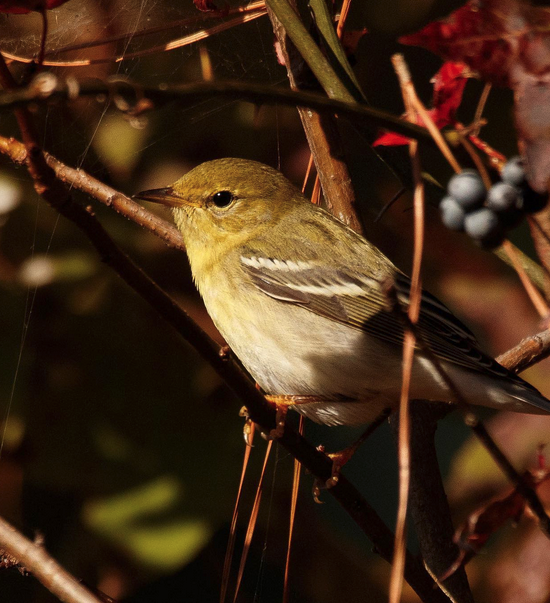
Male Blackpoll Warblers can be tough to ID when not in their familiar black and white breeding plumage.
As seen here dressed in autumn drab colors, they resemble the females and are often confused with Bay-breasted and Pine Warblers.
My go-to ID point are the Blackpoll’s orange feet paired with black legs since both Bay’s and Pines have dark grey feet. This makes it a little easier to figure what I’m looking at when trying to squint out a good look through the leaves.

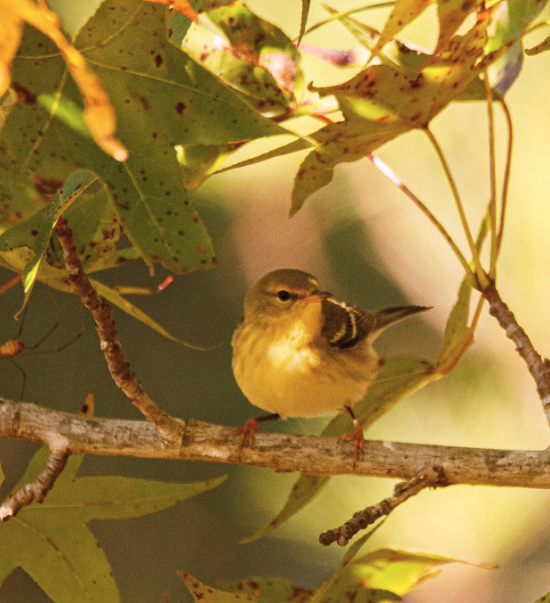

Blackpoll Warblers nest across northern Canada and into Alaska. They are considered a transient visitor to the Tarheel State, only passing through during the migratory periods of spring and fall.
Though most are likely out of the area by now, it’s still worth keeping an eye out for them over the next week or so.
If ya end up missing out, no worries!
They’ll return to North Carolina in April so you’ll have another opportunity to catch a look then.
Photos by @sally_siko of @bestlife_birding on my beloved full frame 50MP beast, the mighty @canonusa #5Ds

